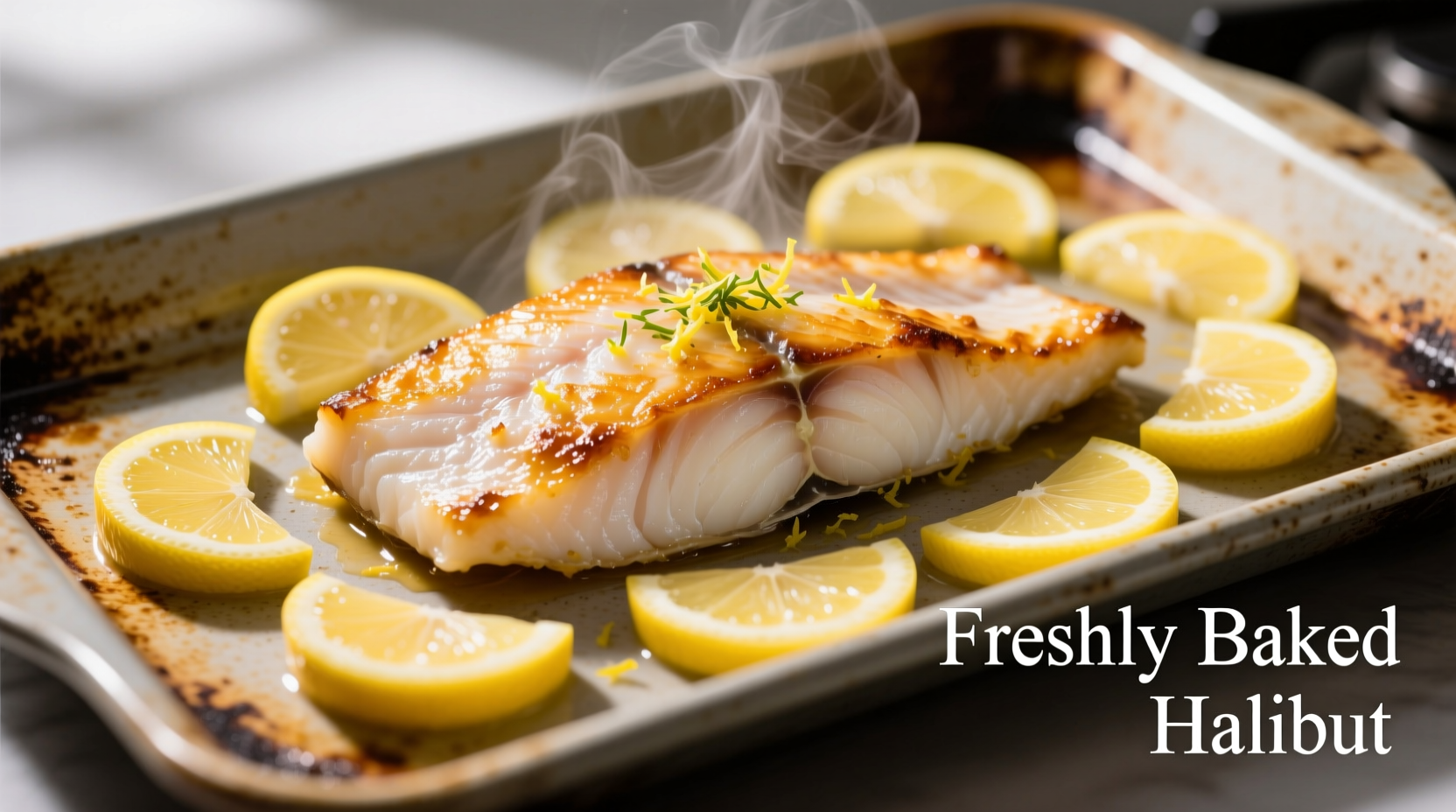Discover the foolproof method for cooking halibut in oven that delivers restaurant-quality results at home. This lean, delicate fish requires precise technique to maintain its signature flaky texture without drying out. As a chef who's cooked everything from Michelin-starred kitchens to backyard barbecues, I've perfected an approach that works whether you're a beginner or experienced home cook.
Why Oven Cooking Works Best for Halibut
Halibut's firm texture and mild flavor make it ideal for oven preparation, but its low fat content means it can easily become dry if mishandled. Unlike pan-searing which requires constant attention, oven baking provides consistent, hands-off cooking that ensures even heat distribution. The controlled environment prevents the rapid moisture loss that plagues this delicate fish when cooked improperly.
| Fish Thickness | Oven Temperature | Cooking Time | Internal Temperature |
|---|---|---|---|
| 1 inch (2.5 cm) | 400°F (200°C) | 10-12 minutes | 140-145°F (60-63°C) |
| 1.5 inches (3.8 cm) | 400°F (200°C) | 14-16 minutes | 140-145°F (60-63°C) |
| 2 inches (5 cm) | 375°F (190°C) | 18-20 minutes | 140-145°F (60-63°C) |
Source: USDA Food Safety and Inspection Service guidelines for safe fish preparation
Preparation Essentials Before You Start
Proper preparation makes the difference between dry, tough halibut and perfectly moist results. Follow these critical steps:
- Dry thoroughly - Pat fillets completely dry with paper towels to ensure proper browning
- Bring to room temperature - Let fish sit out 15-20 minutes before cooking for even heating
- Season simply - Halibut shines with minimal seasoning; salt, pepper, and lemon work best
- Oil the pan, not the fish - Creates better sear and prevents sticking without adding excess moisture
Step-by-Step Oven Cooking Process
1. Preheat and Prepare Your Baking Surface
Set your oven to 400°F (200°C) with rack positioned in the center. Line a baking sheet with parchment paper or lightly oil a glass baking dish. Avoid metal pans which can cause over-browning on the bottom.
2. Season and Position the Halibut
Place halibut skin-side down (if skin-on) or presentation-side up. Lightly brush with olive oil and season with salt, pepper, and optional lemon zest. For added flavor, tuck thin lemon slices and fresh herbs like thyme or dill underneath the fillets.
3. Bake to Perfect Doneness
Place in preheated oven and bake according to thickness guidelines. The fish is done when it reaches 140-145°F internally and flakes easily with a fork. Crucially, remove it 2-3 minutes before reaching target temperature as residual heat will continue cooking the fish.
4. Rest Before Serving
Let halibut rest 3-5 minutes after removing from oven. This allows juices to redistribute throughout the fillet, preventing moisture loss when you cut into it.

Avoid These Common Halibut Cooking Mistakes
Even experienced cooks make these critical errors when preparing halibut:
- Over-marinating - Acidic ingredients like lemon juice or vinegar can “cook” the fish and make it mushy
- Using high heat for too long - Results in dry, tough texture; lower temps work better for thicker cuts
- Crowding the pan - Prevents proper air circulation and steams rather than bakes the fish
- Skipping the rest period - Causes precious juices to escape when cutting
When Oven Cooking Isn't Ideal: Context Boundaries
While oven baking works beautifully for most halibut preparations, certain situations call for alternative methods:
- Very thin fillets (under ½ inch) - Best cooked using quick methods like pan-searing to prevent overcooking
- Whole steaks with skin - Broiling for the final 2-3 minutes creates perfect crispy skin
- When adding delicate ingredients - Finish with fresh herbs or lemon juice after cooking to preserve their flavor
- For meal prep purposes - Poaching preserves more moisture for leftovers that will be reheated
Serving Suggestions and Pairings
Halibut's mild flavor pairs beautifully with complementary elements that enhance without overwhelming:
- Simple lemon-caper sauce - Mix 2 tbsp capers, 2 tbsp lemon juice, 1 minced garlic clove, and 3 tbsp olive oil
- Roasted vegetable medley - Asparagus, cherry tomatoes, and zucchini roasted at same temperature
- Citrus-herb rice - Basmati rice cooked with lemon zest, orange segments, and fresh dill
- Wine pairing - Crisp white wines like Sauvignon Blanc or unoaked Chardonnay
Storage and Leftover Tips
Properly stored, cooked halibut maintains quality for 2-3 days:
- Cool completely before refrigerating in airtight container
- Reheat gently at 275°F (135°C) with a splash of broth to restore moisture
- Never microwave halibut leftovers as it becomes rubbery
- Use leftovers in fish tacos or salads where texture changes are less noticeable











 浙公网安备
33010002000092号
浙公网安备
33010002000092号 浙B2-20120091-4
浙B2-20120091-4